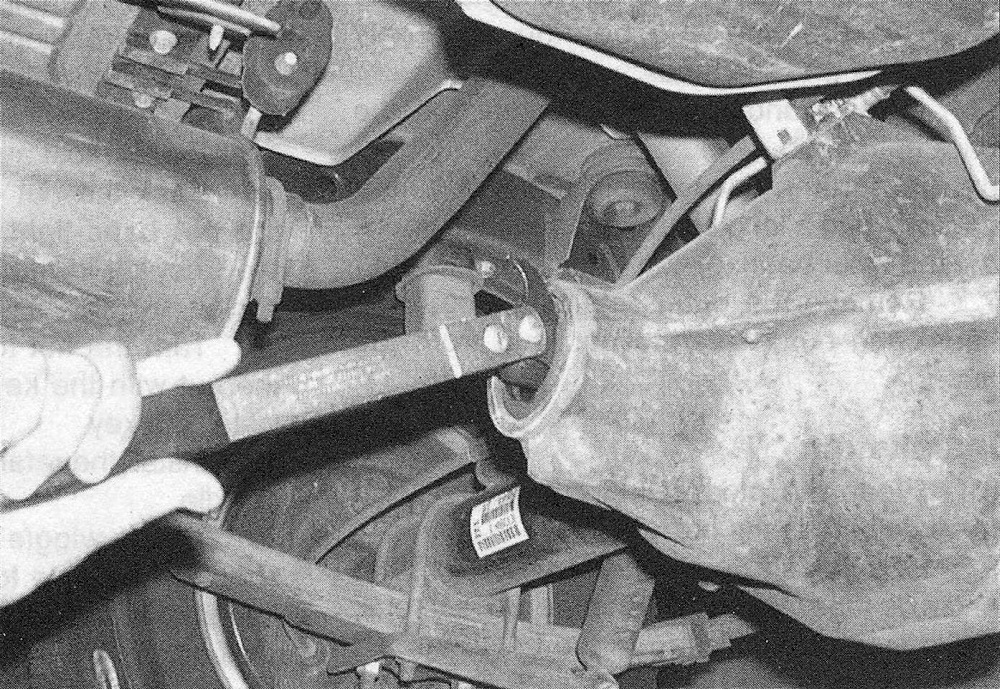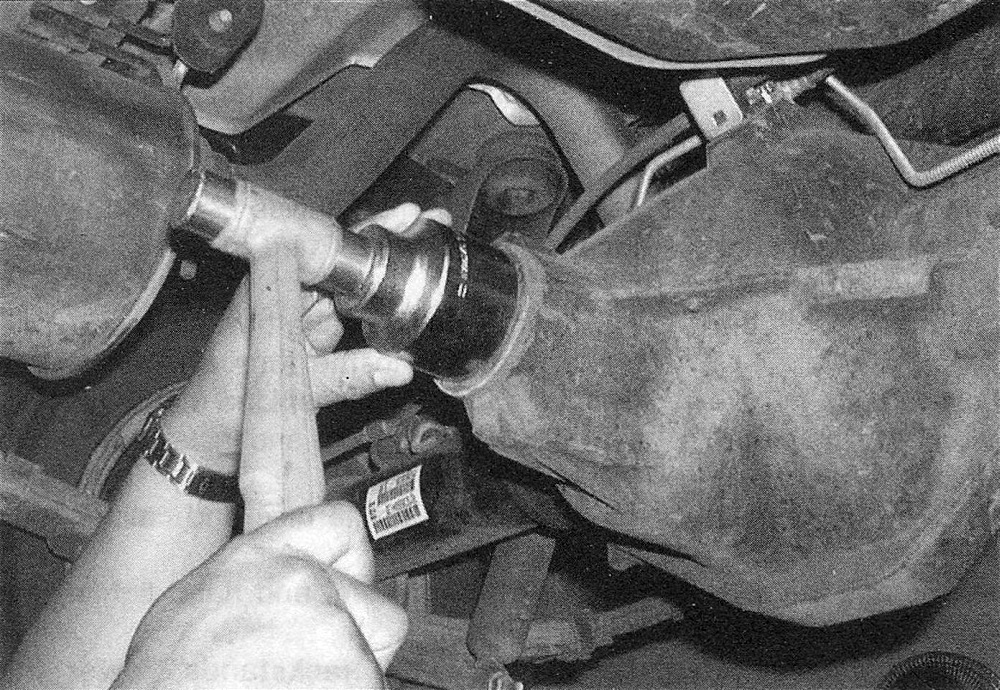Pinion oil seal – replacement
Note: This procedure applies to the front and rear pinion oil seals.
1. Loosen the wheel lug nuts. Raise the front (for front differential) or rear (for rear differential) of the vehicle and support it securely on jackstands. Block the opposite set of wheels to keep the vehicle from rolling off the stands. Remove the wheels.
2. Disconnect the driveshaft from the differential pinion flange and support it out of the way with a piece of wire or rope (Driveshaft(s) – removal and installation).
3. Rotate the pinion a few times by hand.
Use a beam-type or dial-type inch-pound torque wrench to check the torque required to rotate the pinion (see illustration). Record it for use later.
21.3 Use an inch-pound torque wrench to check the torque necessary to rotate the pinion shaft
4. Mark the relationship of the pinion flange to the shaft then count and write down the number of exposed threads on the shaft.
5. A special tool, available at most auto parts stores, can be used to keep the companion flange from moving while the self-locking pinion nut is loosened. A chain wrench can also be used to immobilize the flange (see illustration).
21.5 A chain wrench can be used to hold the pinion flange while the nut is loosened
6. Remove the pinion nut.
7. Withdraw the flange. It may be necessary to use a two-jaw puller engaged behind the flange to draw it off. Do not attempt to pry or hammer behind the flange or hammer on the end of the pinion shaft.
8. Pry out the old seal and discard it (see illustration).
21.8 Use a seal removal tool or a large screwdriver to remove the pinion seal (be careful not to disturb the pinion while doing this)
9. Lubricate the lips of the new seal and fill the space between the seal lips with wheel bearing grease, then tap it evenly into position with a seal installation tool or a large socket (see illustration). Make sure it enters the housing squarely and is tapped in to its full depth.
21.9 A large socket with a diameter the same as that of the new seal can be used to drive the pinion seal into the differential housing
10. Install the pinion flange, lining up the marks made in Step 4. If necessary, tighten the pinion nut to draw the flange into place. Do not try to hammer the flange into position.
11. Apply a bead of RTV sealant to the ends of the splines visible in the center of the flange so oil will be sealed in.
12. Install the washer and a new pinion nut. Tighten the nut until the number of threads recorded in Step 4 are exposed.
13. Measure the torque required to rotate the pinion and tighten the nut in small increments (no more than 5 ft-lbs) until it matches the figure recorded in Step 3. To compensate for the drag of the new oil seal, the nut should be tightened a little more until the rotational torque of the pinion exceeds the earlier recording by 5 in-lbs.
14. Reinstall all components removed previously by reversing the removal Steps, tightening all fasteners to their specified torque values.



